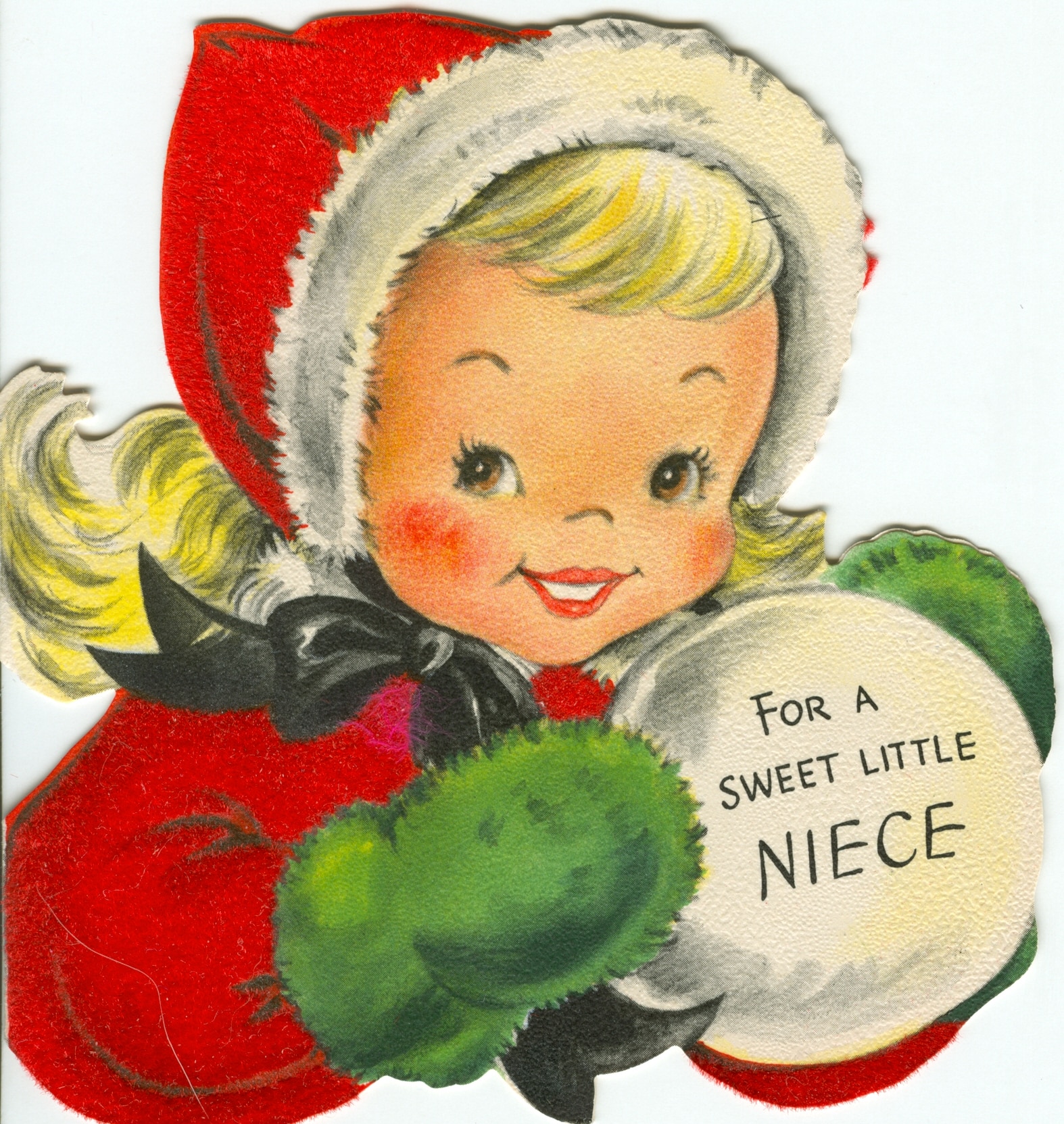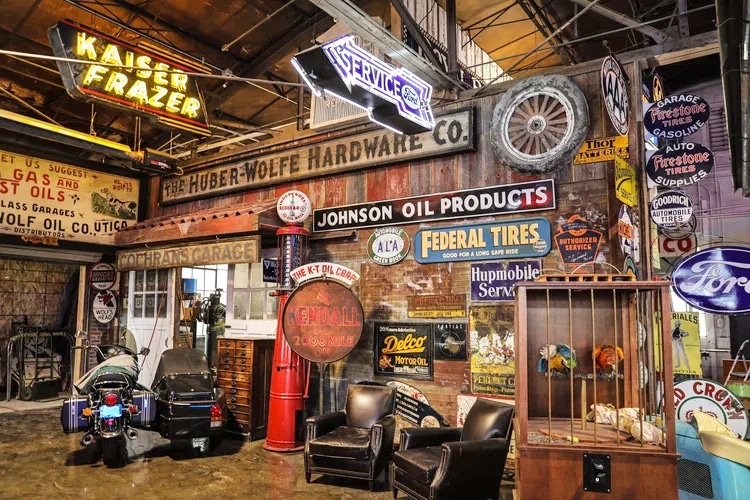Nostalgia and Beauty: The Red Rim Coca-Cola Serving Tray Series
By Chris H. Beyer – Copyright 2025
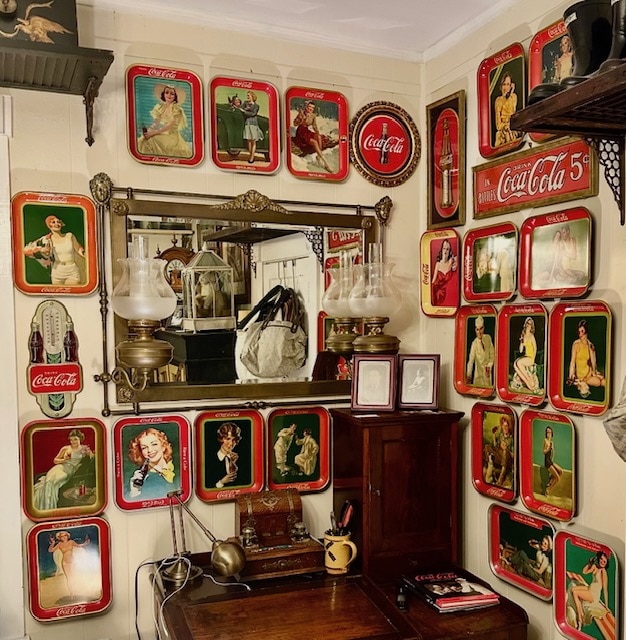
Coca-Cola® serving trays were issued by the Coca-Cola Company for a period of nearly 70 years to merchandise their celebrated brand of soft drink. The concept for the first Coca-Cola tray, which was issued in 1896, was to provide a functional mechanism to deliver glasses of Coca-Cola to patrons of soda fountains.
For the next 70 years, the Company distributed attractive colorful serving trays. The compelling images printed on these metal serving trays provide a remarkable visual diary of fashions and historical scenes which serve to shape lasting impressions of the past.

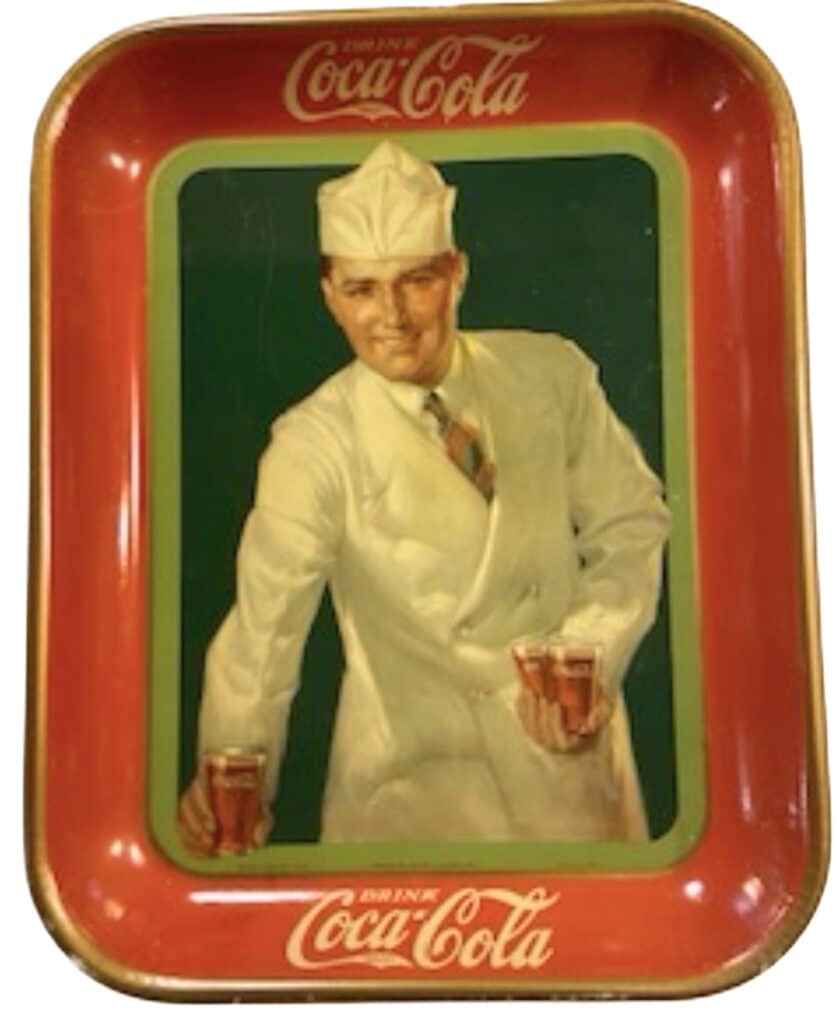
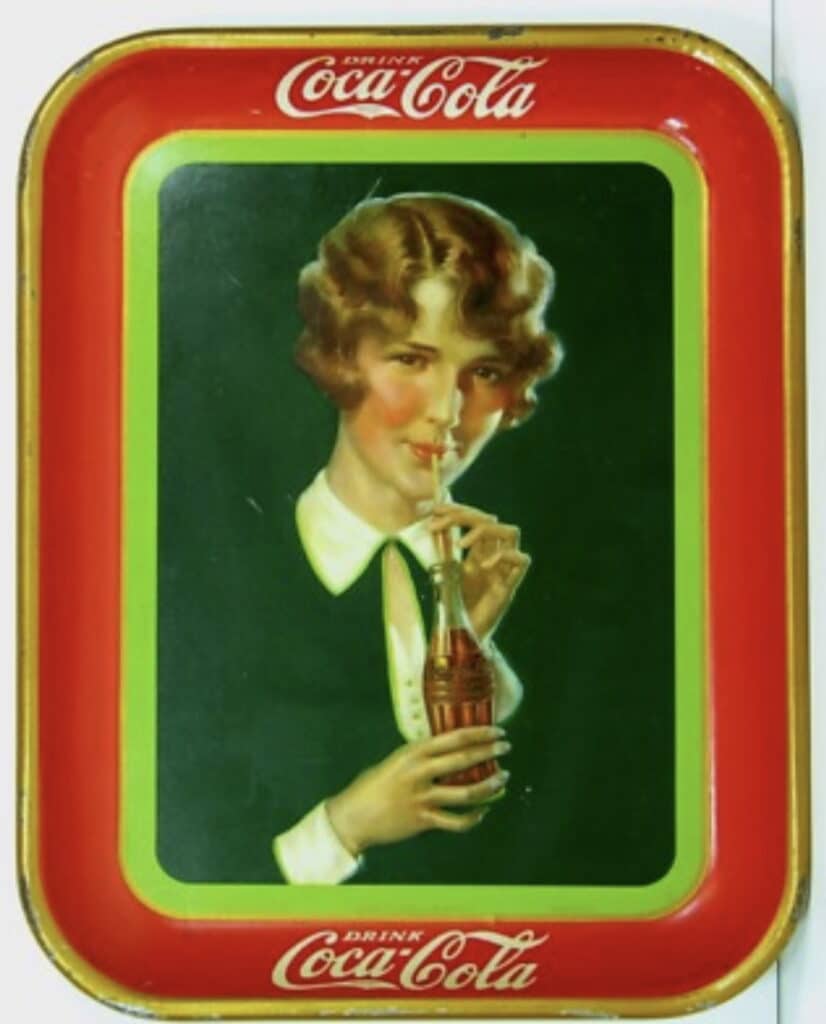

Collecting and displaying all forms of Coca-Cola Company advertising in the form of signs, trays, calendars and a seemingly unlimited range of advertising collateral has become popular. Since the turn of the 20th century, the Company hired premier illustrators to capture images of attractive people in a variety of settings enjoying the delicious and refreshing soda that would eventually become popular worldwide. The most common subject matter of Coca-Cola advertising from the turn of the century through the 1960s featured images of attractive young women or ‘the Coca-Cola Girl’. Premium quality examples of trays from 1900-1910 are not only challenging to locate but are expensive to acquire. As such, assembling a complete collection of original trays would not only be extremely costly but challenging to locate. This article will focus on Coca-Cola trays issued from 1926-1948.
The Red Rim Coca-Cola Tray Series
The Coca-Cola company experienced dynamic growth after the turn of the century and by the mid-twenties through 1950, serving trays were produced in sufficient quantities that collectors can find quality, displayable examples of most issues without great difficulty. Trays produced from 1896-1925 were produced in a variety of different formats including oval, rectangular and oblong shapes. Colors featured on the rims of the earlier trays varied from year to year. That changed in 1926 when the tray was produced with a bright red inner rim. That design feature continued for 17 years and included 21 different tray issues. As a result, trays produced during this period have become known to collectors as the ‘red rim’ series of Coca-Cola serving trays. Red rim trays were produced in a rectangular 10½” x 13 ¼” size. Over the years, red rim trays have become popular with collectors.
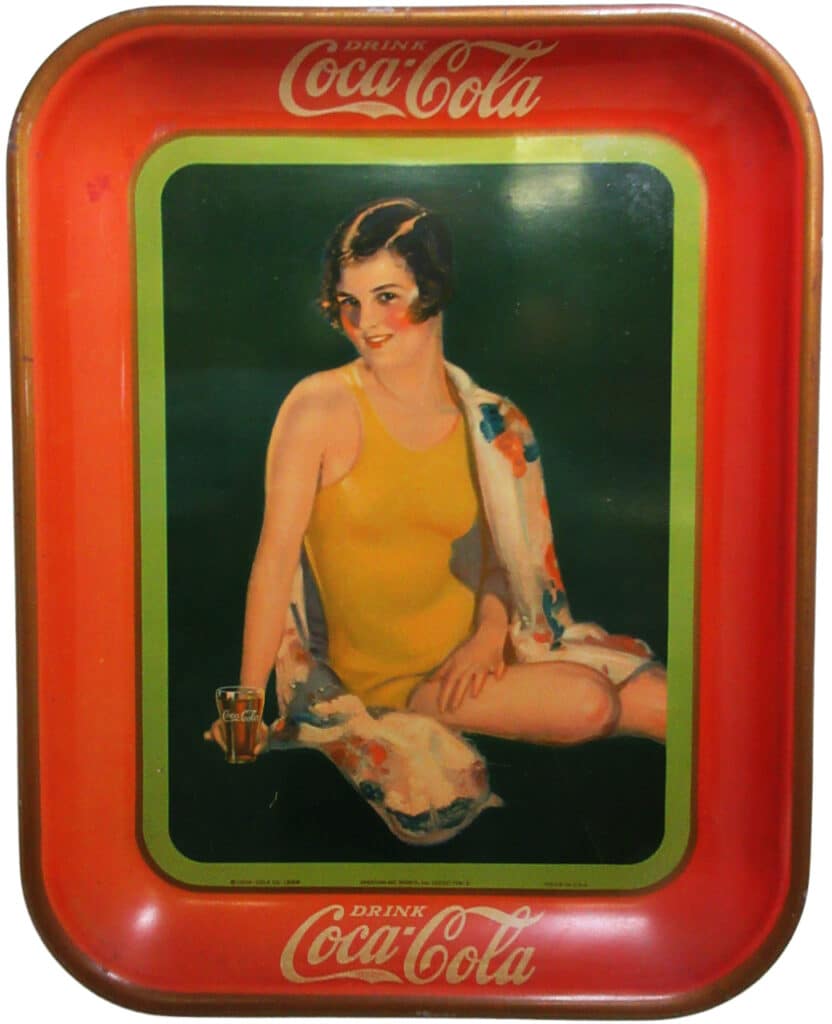


All but two issues of red rim trays were produced by American Artworks, Cochocton Ohio. That company was an early leader in the production of metal trays and signage. The superior image quality of their output remained consistent throughout the tray series. During the late twenties, the Company selected Tindeco (a metal sign printer) to produce two issues that included the 1927 tray referred to as the ‘Curb Service’ tray and the 1929 ‘Swimsuit Girl’ (featuring a pretty woman with a Coca-Cola bottle). The quality of the Tindeco trays proved to be substandard compared to American Artworks trays which resulted in the Coca-Cola Company reverting to the use of American Artworks for the trays issued from 1930-1942. All original Coca-Cola serving trays from those years bear the name of the printer on the base of the image area of the tray. That distinction is important in distinguishing original trays from reproductions issued in 1934 and 1937 that do not display printer marks. The 1934 reproduction tray is often inadvertently or purposely misrepresented by sellers as an original because it has the 1934 date on it. Fortunately, only two out of the 21 red rim tray issues have been reproduced.
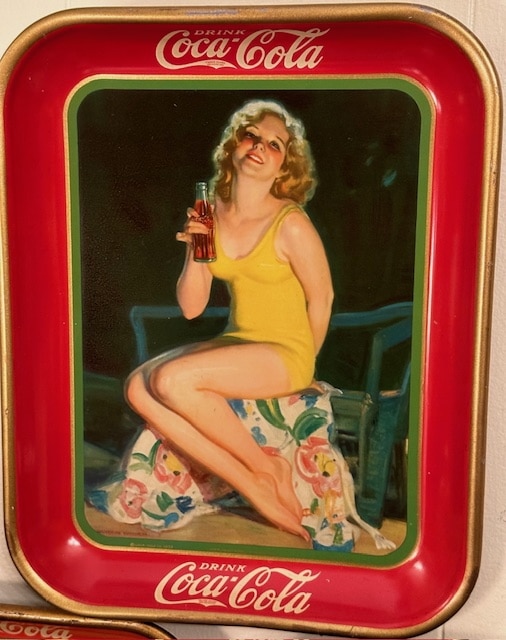


Red Rim Coca-Cola Tray Art
The Coca-Cola company selected a wide variety of subjects for portrayal on their red rim trays. No less than eight tray issues featured images of young women in swimsuits.
Two trays included imagery of period automobiles (1927 and 1942). The 1931 tray demonstrated the company’s use of prominent illustrators with the depiction of a barefoot boy and his dog based on a painting by Norman Rockwell. Other notable illustrators employed to produce tray art included Fred Mizen, Haddon Sundblom, Hayden Hayden, and Bradshaw Crandell. Over the years the Coca-Cola Company chose to build their brand with portrayals of movie screen celebrities. Three red rim trays included images of actors and actresses such as Frances Dee (1933), Maureen O’Sullivan and Johnny Weissmuller (1934) and Madge Evans (1935).
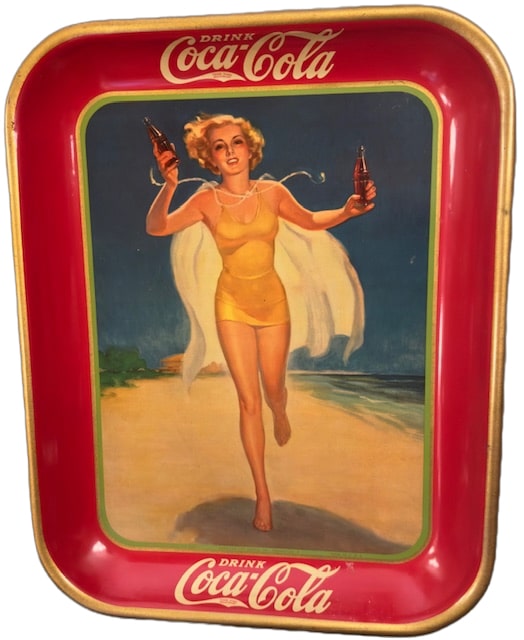
Over the years, the red rim trays have become known by descriptions that have become associated with each issue of the tray series and are as follows:
1926 ‘Golfing Couple’
1927 ‘Soda Jerk’
1927 ‘Curb Service’
1928 ‘Bobbed Hair Girl’
1929 ‘Swimsuit Girl’ (bottle version)
1929 ‘Swimsuit Girl’ (glass version)
1930 ‘Bather Girl’
1930 ‘Telephone Girl’
1931 ‘Barefoot Boy’
1932 ‘Yellow Bathing Suit Girl’
1933 ‘Frances Dee’
1934 ‘Weissmuller’
1935 ‘Madge Evans’
1936 ‘Hostess’
1937 ‘Running Girl’
1938 ‘Girl at Shade’
1939 ‘Springboard Girl’
1940 ‘Sailor Girl’
1941 ‘Skater Girl’
1942 ‘Two Girls at Car’
1948 ‘Redhead Girl’

Collecting the Red Rim Tray Series
As with other fields of collecting, condition and scarcity are primary determinants of Coca-Cola tray values. As time goes by, assembling a full set of red rim trays has become more challenging. Late twenties and early thirties Coca-Cola trays are far more difficult to find in premium condition while late thirties and early forties trays are readily available in collectible condition. In general, new old stock or mint condition trays are the most difficult to obtain but are the most desirable and are likely to hold or increase in value. The following is a scarcity index of the red rim tray series based on availability that meet the standards of near-mint to mint condition:
Tray scarcity level (to acquire) in near mint to mint condition:
Level 1 – most challenging: 1927 Curb Service, 1932 Yellow Bathing Suit Girl, 1926 Golfing Couple
Level 2 – scarce: 1928 Soda Jerk, 1928 Bobbed Hair Girl, 1929 Bather, 1930 Bather, 1930 Telephone Girl
Level 3 – semi-scarce: 1931 Barefoot Boy, 1933 Frances Dee, 1934 Weissmuller
Level 4 – underrated: 1935 Madge Evans, 1936 Hostess Girl
Level 5 – most commonly available: 1937, 1938, 1939, 1940, 1941, 1942
Level 6 – easiest to acquire: 1948
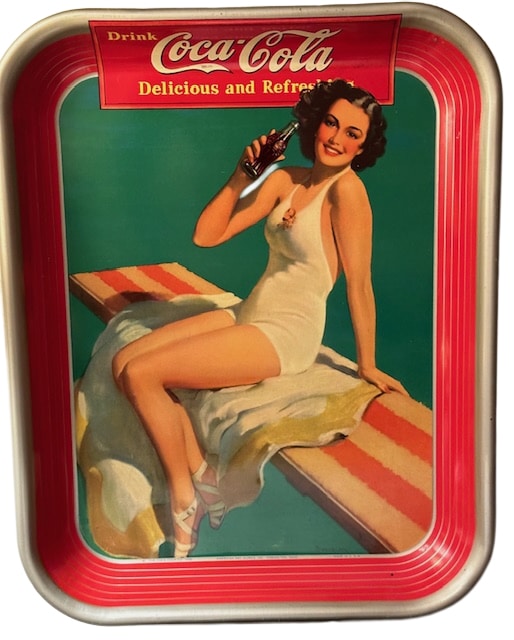
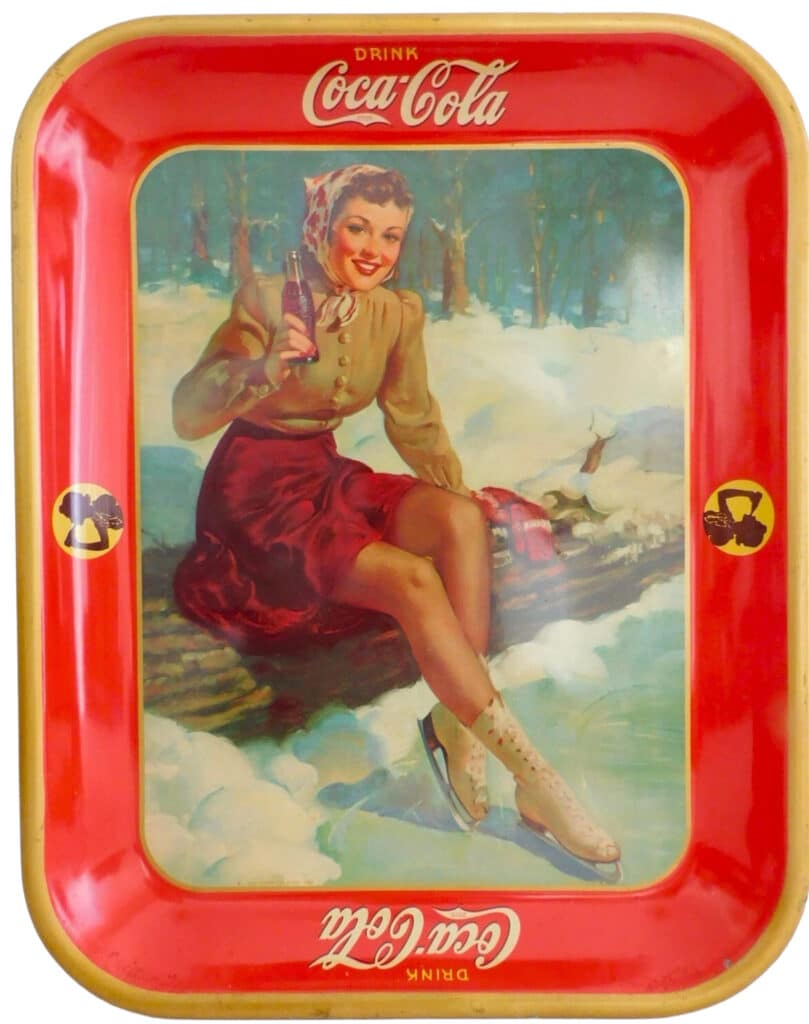
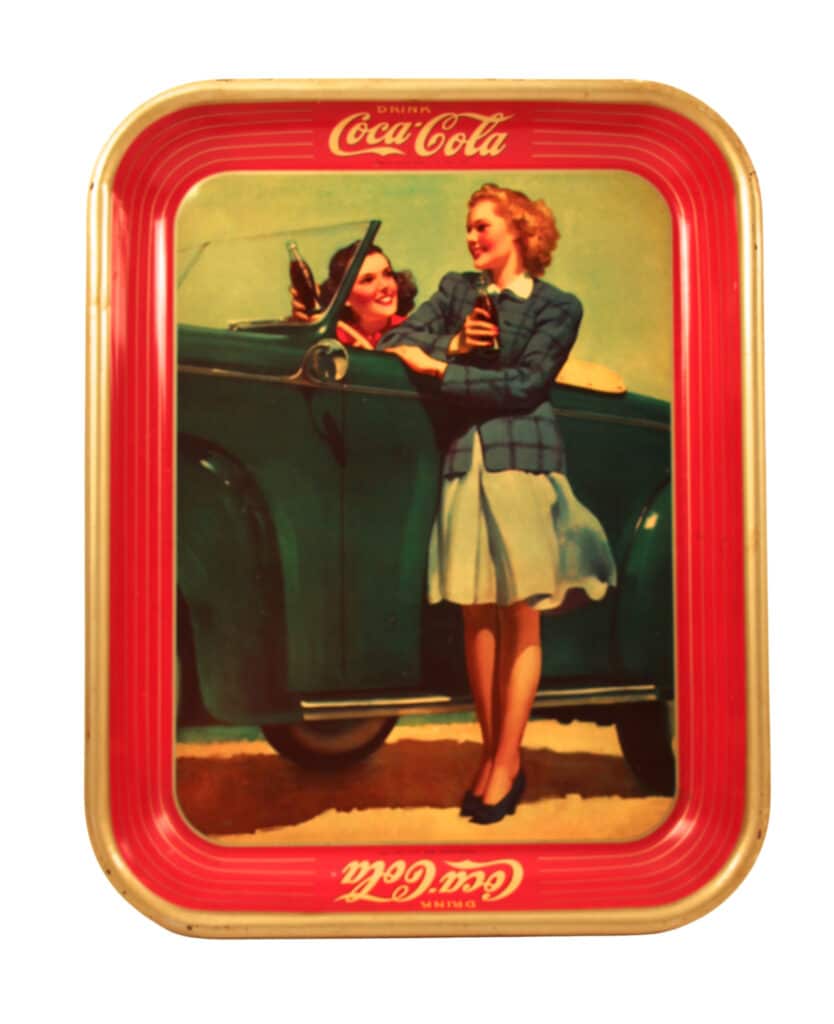
Red Rim Tray Pricing: Reproductions vs. Originals
As long-time Coca-Cola advertising memorabilia collectors are aware, values for originally issued signs, trays, calendars, cardboard signs and other merchandising pieces reached their apex in value during the late 1990s-2005 but have since declined. The Coca-Cola Company did collectors a major disservice by issuing numerous reproductions and fantasy trays over the years. The prodigious numbers of them have diminished the perception of value of originals. Further, generational changes have minimized the influx of new collectors. It is important to note that there are easily discernable differences between original trays and reproductions. Still, original premium condition Coca-Cola serving trays offer a rewarding opportunity to collect lovely images of days gone by.
The book Classic Coca-Cola Serving Trays by Beyer/Petretti has extensive information about all Coca-Cola trays (1896-1950s) and includes a grading guide and how to tell originals from reproductions. The book is readily available on eBay.
Summary
Red rim Coca-Cola Serving Trays represent an enjoyable category of collecting and present the opportunity to assemble an impressive display of American advertising history. One can start collecting trays that are affordable in the best condition possible and ultimately upgrade individual issues as time goes by. Recent sales on eBay and other auction sites indicate growing interest in original authentic Coca-Cola serving trays. There are many ways to display them. The author recommends the use of quality tray magnets for placement on the wall but there are other methods that are equally as desirable.
Serving Tray Grading Guide
To assist existing and new tray collectors, we have provided a tray grading guide as a
reference to assist collectors with the process of determining the grade of trays offered for sale. Condition is a primary driver of value.
Metal Serving Tray Grading guide based on a scale of 1-10:
New Old Stock Mint 9.7-9.9/10: Mint/NOS Red Rim trays are difficult to locate with late 1920s-early ‘30s issues being the most challenging. Trays in this lofty condition retain their original shine and must exhibit no visual signs of use or wear. They must have a rim with no detracting chips. It is important to note that even as produced mint condition trays may have a tiny mark or two from stacking or handling at time of issue. New Old Stock trays bring premium plus prices when offered for sale. Earlier red rim trays (1926-1934) are particularly difficult to locate in today’s market in near mint or mint condition.
Near Mint plus or 9.5/10: Trays in this condition must have picture surfaces exhibiting original as issued shine and color with no visual sign of having been used. They must have a nearly
perfect rim and only a few miniscule marks. Trays in this condition appear virtually mint when displayed and viewed from 2 or three feet away. Trays in this condition are likely to hold their value or increase in the future.
Near Mint 9.0/10: Near Mint trays must exhibit superior picture area with original shine and color and have only a few minor marks that do not detract from the original appearance. The rim must have only minor marks. Older trays (pre 1920) may exhibit surface crazing of the
lacquer coat. Trays in this condition are highly displayable and are likely to hold their value.
Excellent 8.5/10: Trays in 8.5 or excellent condition are desirable from a collectable standpoint (particularly scarce issues) and must have an attractive picture with original as printed color, modest shine and only moderate handling marks on the picture and rim.
Good 8.0/10: Except for extremely rare trays, this grade is the minimum grade a
collector/investor should consider for purchase. Trays in this condition must exhibit full
original color but may exhibit multiple marks and rim chips from wear and usage. To meet the standard for this grade a tray must exhibit no fading or highly visible impairments, or missing paint. A tray in this grade level must be attractive enough to display.
Fair 6.0-7.5/10: With the exception of truly rare trays (pre-1910 ), this condition of trays are not desirable. They may exhibit fading, sizeable marks on the picture or rim, scratches or areas of missing paint. Some graders refer to trays at this grade level as good or very good, but we consider them not worthy of purchase with the exception as noted above (rare issues).
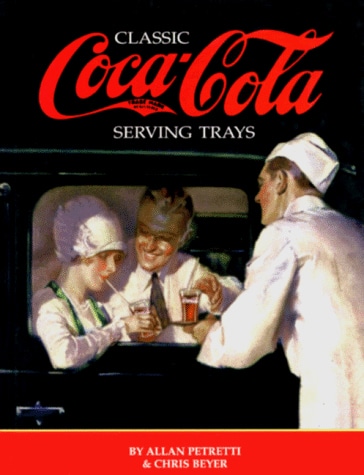
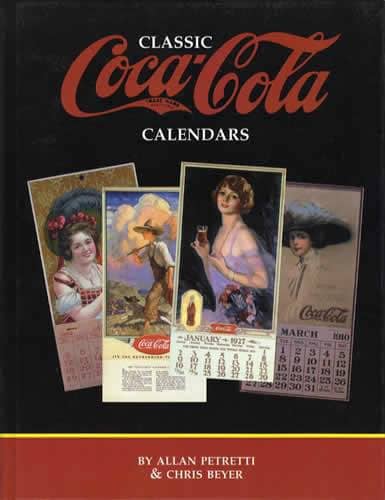
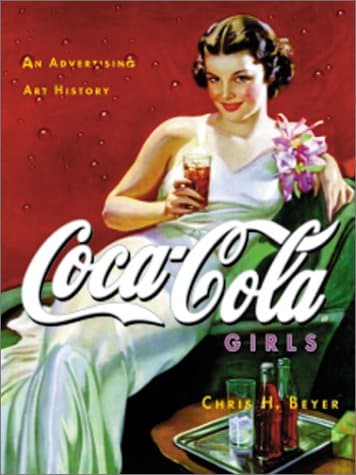
Chris H. Beyer and his wife Gina Beyer are long-time collector/dealers of a variety of
categories of early American advertising.
Mr. Beyer has written numerous articles on the topic of antique advertising and is the co-author of Classic Coca-Cola Serving Trays and Classic Coca-Cola Calendars (Beyer-Petretti) and sole author of Coca-Cola Girls: An Art Advertising History.



